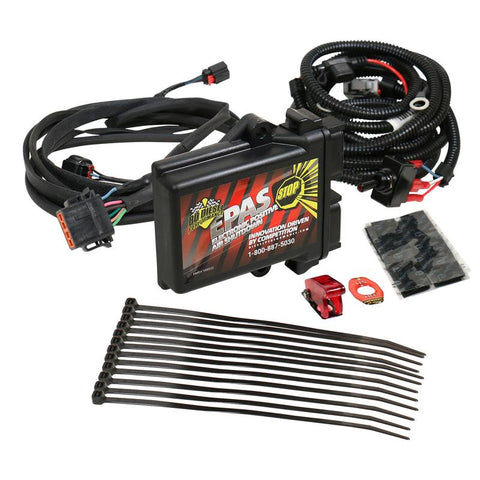START TYPING TO SEE PRODUCTS YOU ARE LOOKING FOR.
0
Your shopping cart is empty.
Here at BD Diesel we're a bit obsessed when it comes to anything diesel, you could almost say we have it running through our veins. Recently we've been getting a lot of questions about that annoying little thing called "diesel engine runaway". If you're not familiar with the name you might be familiar with the symptoms. First let's talk about the "what". Diesel engine runaway is when the engine speed (rpms) accelerate without input or control by the driver. Almost like your engine is trying to drive away on you while you're foot is on the brake. Even when you try to turn the engine off with your key, it keeps on running. Don't worry this doesn't mean your diesel engine is demon possessed!
So, what causes diesel engine runaway anyway? Well we're so glad you asked... we love this stuff! The short answer is that in order to "runaway" a diesel engine needs an uncontrolled fuel source. A diesel engine throttles fuel and does not have a throttle plate like a gasoline engine. Therefore, if the engine is supplied with additional fuel, the rpm's can increase. If that fuel source is uncontrolled, the engine can continue to accelerate until the fuel is used up, or the mechanical components of the engine cannot support the speed (or rpm) and fail. You're probably asking where the heck this uncontrolled fuel comes from. The sources of fuel can include, but are not limited to:
Now that we know what it is and how it happens, let's talk about prevention.
To fundamentally stop any diesel engine, air or fuel supply needs to be stopped. Since we already discussed how the fuel is uncontrollable in a runaway, stopping the air supply is the only effective way of stopping a diesel engine. To do this the air intake of the vehicle needs to be shut or plugged in some way. A positive air shutoff is used to do exactly that.
A positive air shutoff (PAS) is a throttle value (buttery fly type or guillotine type) that is commonly installed into the intake tubing of a diesel engine. The valve is default set to open, and does not actuate until it's commanded to. In the case of diesel engine runaway, the user can engage the ‘PAS' by hitting a switch which will slam the throttle blade shut, starving the engine of air and causing it to stall.

Electronic Positive Air Shutdown
Your detected location:
Please select the location that best suits you: